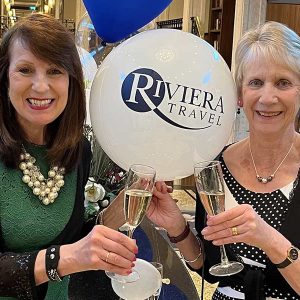Travel journalist Lesley Bellew demonstrates how to make a short break count by packing in the sights and delights of Northern Ireland’s capital city and the County Antrim coast
Morning sunshine pours through huge sash windows, making the fine china and glassware on crisp, white linen tablecloths glisten in the Culloden Estate & Spa’s sumptuous breakfast room.
By a roaring fire I lap up steaming, creamy porridge, complete with a swirl of Irish honey and a little jug of Bushmills whiskey on the side.
A full Irish breakfast follows, and refills of strong coffee, so I stay put by the fireside, admiring the grey and gold décor on this most agreeable first morning in Northern Ireland.
Here, in the once official palace for the Bishops of Down, nothing is rushed and the service is as polished as the antiques in the adjoining lounges.
I had chosen the hotel for its position, in Holywood, six miles outside Belfast – a few minutes’ walk to Cultra station with trains into the city or easy road access to attractions I plan to visit over the course of a few days – Hillsborough Castle, Strangford Lough and the Giant’s Causeway.
The trouble is, I don’t want to move. I’m running late because, even before breakfast, I’ve been mesmerised watching the sun rise over the Belfast Lough, where RMS Titanic sailed on her ill-fated journey from the Harland & Wolff shipyard.
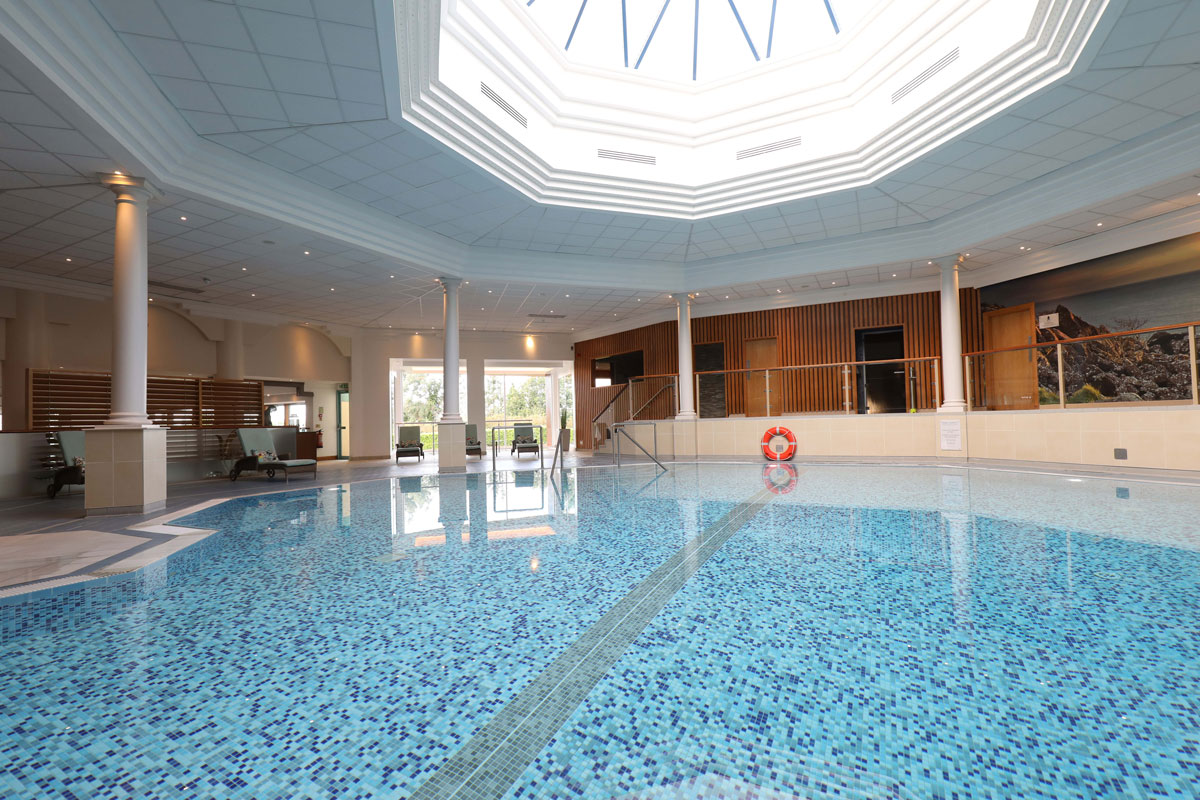
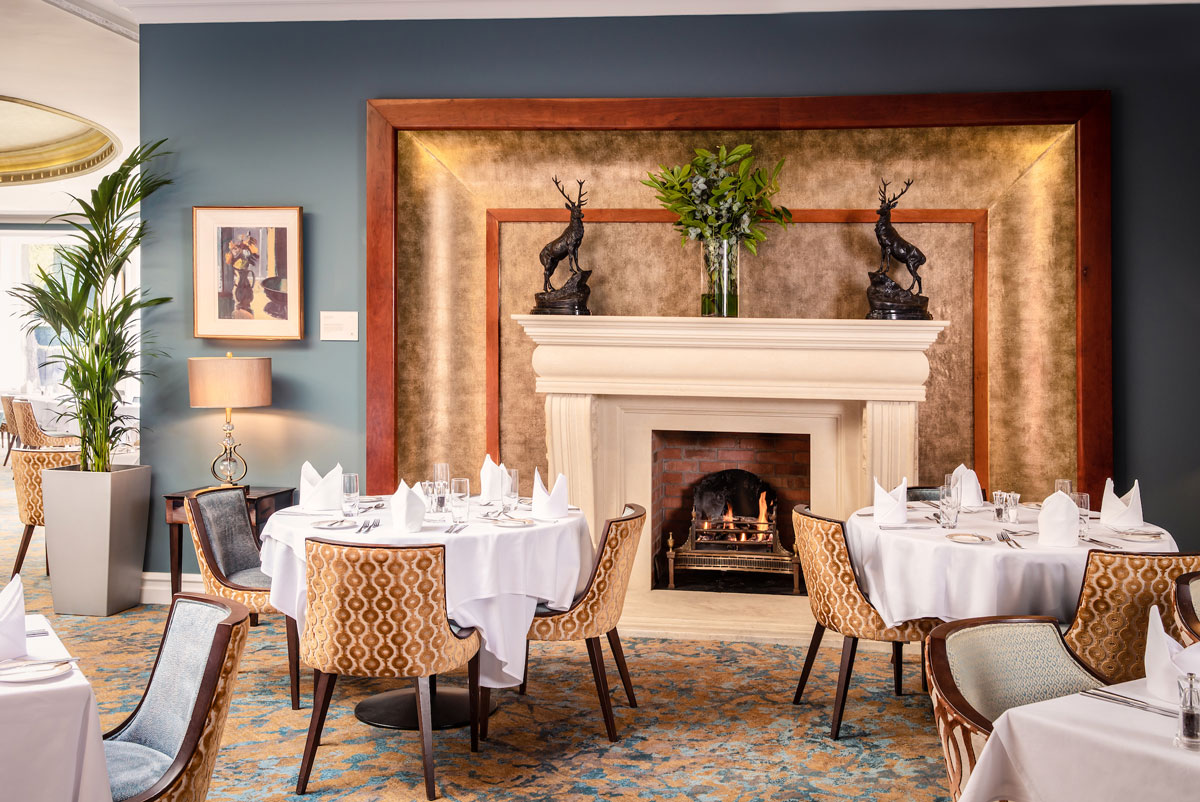
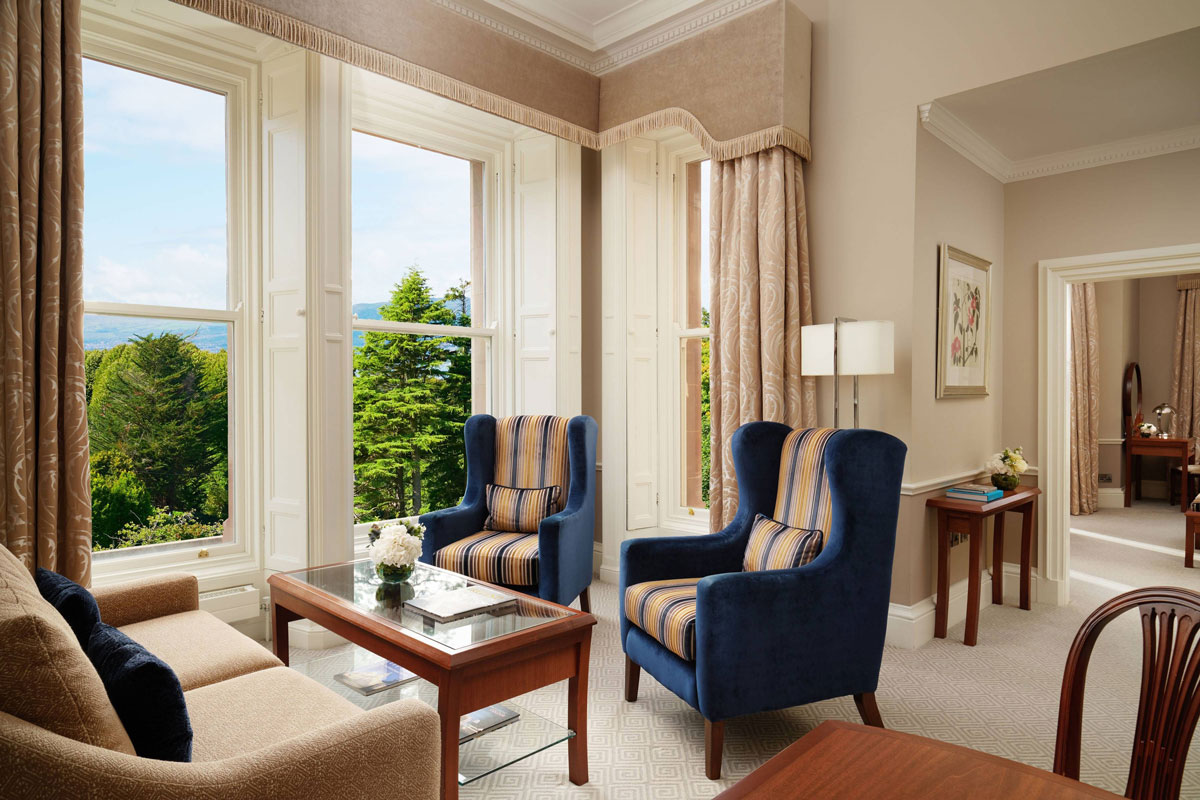
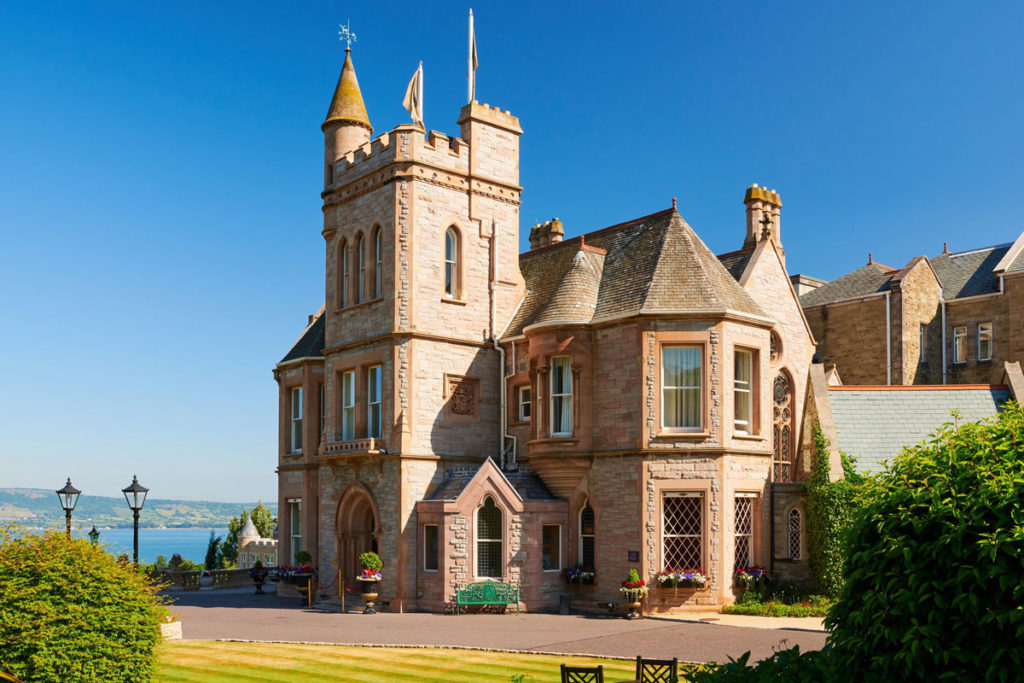
I realise this five-star country house is a destination in itself, a place to linger, and not surprisingly attracts big-name visitors from David Beckham to Tom Jones and Robbie Williams – and yes, I do spot an A-lister, but promise not to tell.
I make up time by taking a black cab for a ‘Troubles’ tour (touringaroundbelfast.com), passing Harland & Wolff’s two giant yellow shipbuilding cranes ‘Samson and Goliath’ emblazoned with the letters H&W.
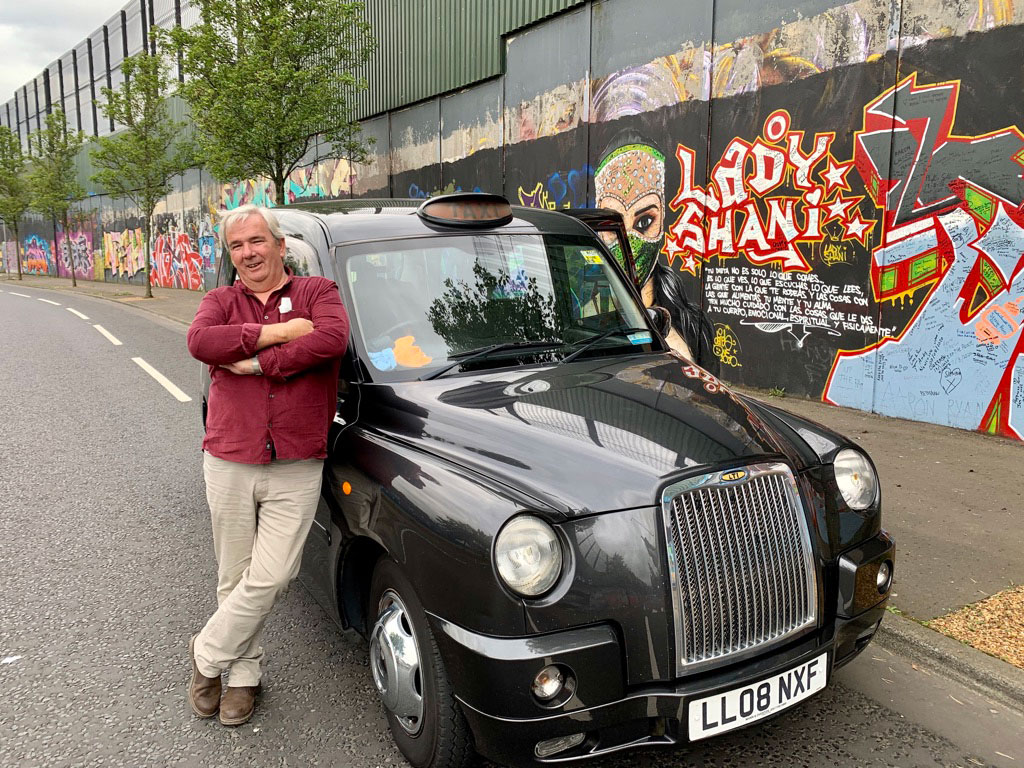
My driver Billy says they are the ‘Hello & Welcome’ signs to Belfast which typifies the friendliness and humour which greets visitors to the city.
Belfast is welcoming but modern-day history cannot be forgotten and I am moved by Billy’s stories as we drive through former strife-torn districts. Gable ends of houses with political murals of masked rifleman and memorials to lost commanders make a haunting memory.
I remember my school’s motto and pen ‘Freedom needs Courage’ on the Peace Wall that divides Shankill Road and the Falls Road. The 20ft high wall stays in place despite the 1998 Good Friday Agreement and I learn from Billy that peace walls extend about 20 miles across Belfast, Derry, Portadown and Lurgan.
My journey continues to Hillsborough Castle, Northern Ireland’s historic royal house and political residence. It was here that the Queen met the President of Ireland Mary Macaleese in an intimate, landmark meeting – the first time a British monarch had visited a head of an independent Ireland leader on the island and it paved the way for the Queen’s visit to Dublin in 2011 and in turn helped bring peace.
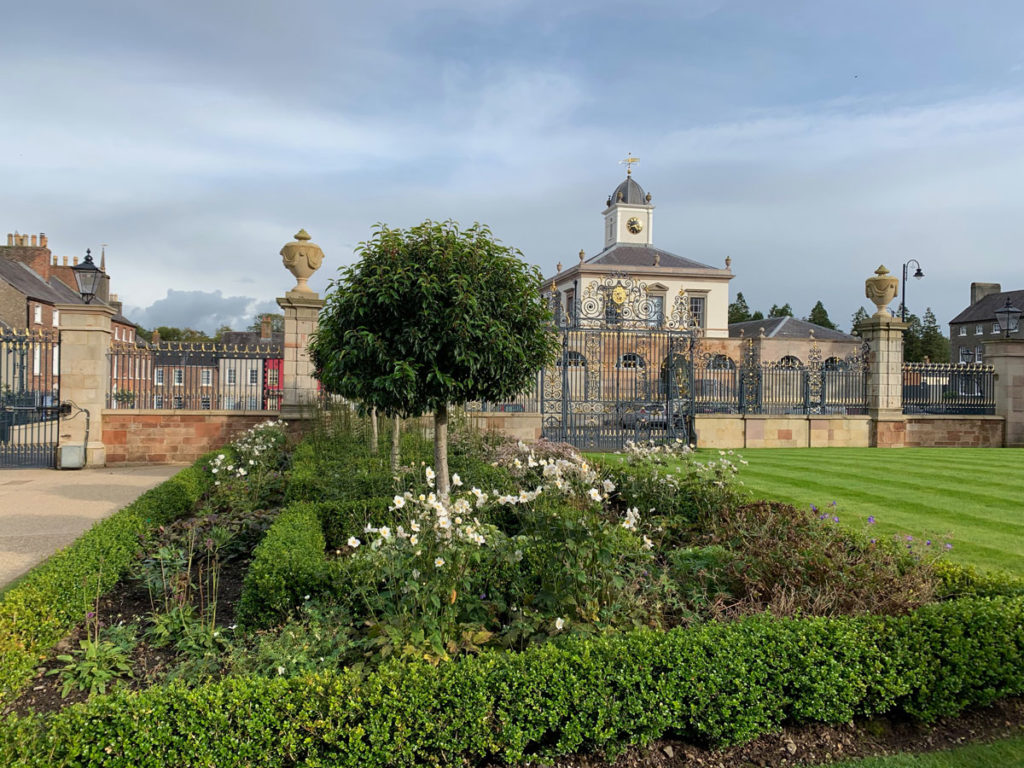
It’s a truly lovely property and I wander around the castle’s gardens, which definitely have a hint of Highgrove planting and the hand of Prince Charles, before walking into the picture-postcard town of Hillsborough to toast peace with a Guinness in The Hillside pub, followed by another to salute Mo Mowlam, who as Secretary of State for Northern Ireland, oversaw negotiations which led to the 1998 Good Friday Agreement. She would also frequent the pub after a long day’s work in Hillsborough Castle.
I also find inner peace during a drive along the startlingly beautiful County Antrim coastline on the way to the Giant’s Causeway. It’s no wonder the scenic road was voted number one region in the world by Lonely Planet in 2018. Green patchworks of hills and glens, carved in the Ice Age, create a soft, magical, mystical landscape draped with a silver-grey mist.
We pass Ballymena’s pretty seaside towns and villages including Carnlough, where the Londonderry Arms, once owned by Winston Churchill, is now a popular hotel and, as we near the Giant’s Causeway, medieval Dunluce Castle, otherwise known as the House of Greyjoy in the TV fantasy drama Game of Thrones.
With long-haul visitors still slow to return to Europe, the Giant’s Causeway, which attracted 1.5 million tourists in 2019, is quiet and I revel in having the basalt blocks pretty much to myself and drink a cheeky shot of Bushmills to indulge myself further with whiskey, literally, on the rocks.
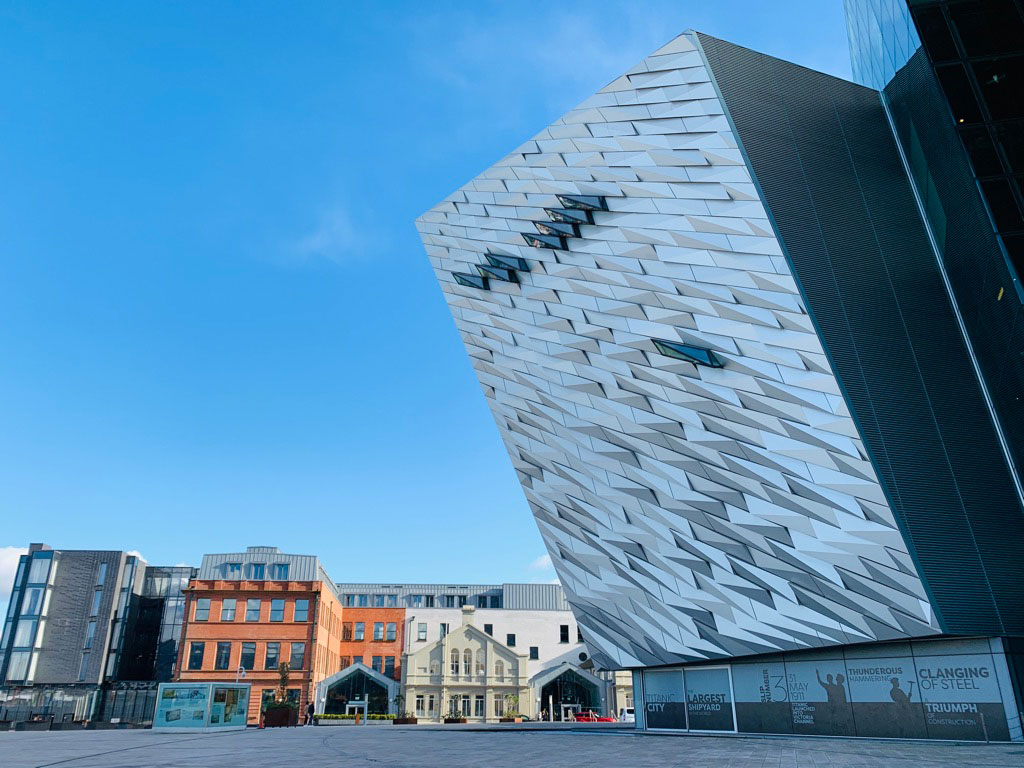
After a memorable day, and the whiskey, I sleep like a log and get up early to explore the Titanic Quarter and Titanic Belfast (Belfast, interestingly has six quarters!).
The dramatic six-floor building, built in the shape of four ships’ hulls clad in aluminium shards looks, ironically, more like an iceberg, tells the city’s side of the Titanic story from construction, launch and the maiden voyage to the changes that were made to maritime law after the tragic sinking.
Since then, the Radio Act of 1912 and the International Convention for the Safety of Life at Sea ensure radio communications operate 24 hours a day on passenger ships and there’s always a secondary power supply to avoid any chance of missing a distress call.
But it is the historic slipways, next to the building, that get the imagination racing. I find myself exploring the full-scale plan of Titanic’s promenade deck and the positions of lifeboats and funnels before wandering over to the former Harland & Wolff offices, now the Titanic Hotel. The former drawing office, where Titanic and her sister ships were designed, has a beautiful barrel-vaulted glass ceiling and is now a delightful venue for afternoon tea.
I am packing in the sights and Mount Stewart, one of Northern Ireland’s most-visited gardens, has more than five miles of walking trails to explore, a lake and room-upon-room of Arts and Crafts-inspired gardens created by Edith, Lady Londonderry, in the early 20th century – all in an eye-wateringly gorgeous spot alongside Strangford Lough’s shore.
Nearby is Castle Espie Wetland Centre, a 60-acre bird and wildfowl sanctuary where the tidal lagoon attracts thousands upon thousands of ducks and geese. In autumn, light-bellied Brent geese pattern the sky, arriving after a migration of almost 2,000 miles.
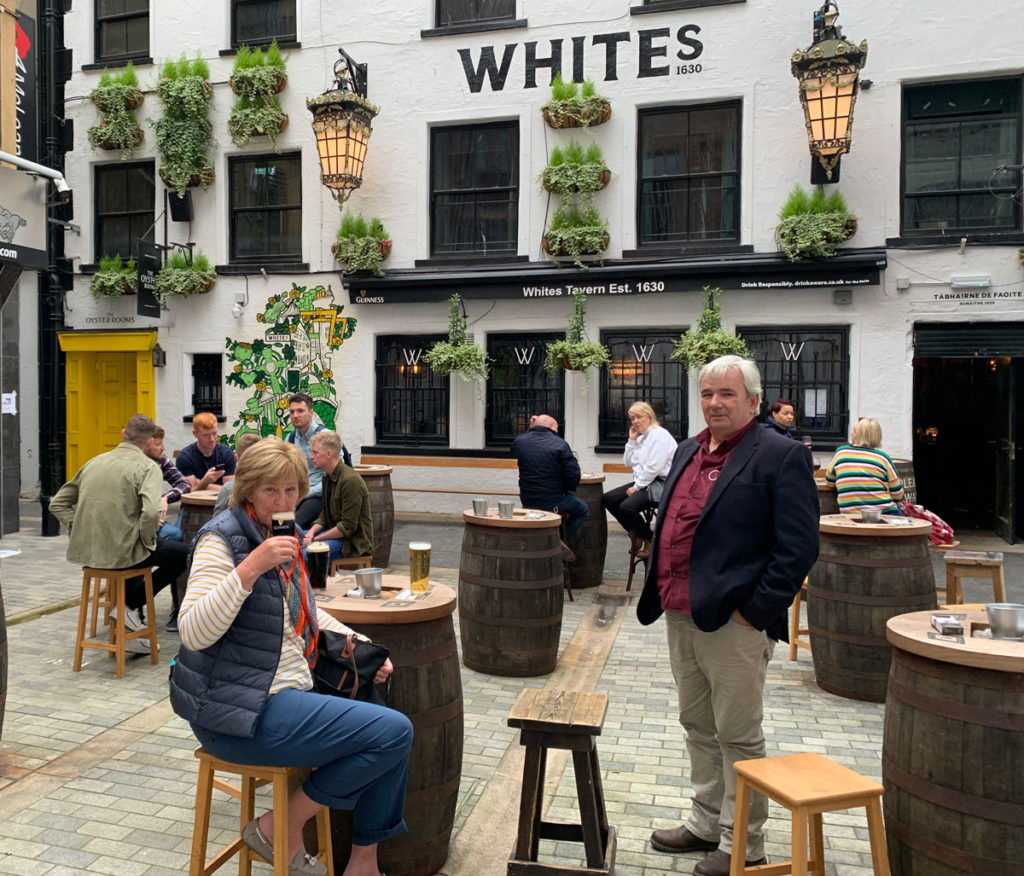
I’m bewitched by Belfast and its surrounds but with only one more day to play I hit the city centre, walking in the Cathedral Quarter which is buzzing with music bars and restaurants.
The pub crawl begins with the Crown Liquor Saloon, a Victorian gin palace with ornately carved-mahogany booths, stained glass and period lighting and, to cut a long story short, I end up at Whites, a pub that dates to 1630 and find myself sitting by the log fire imagining the stories those 400-year-old walls could tell.
Lesley Bellew was a guest of the Culloden Estate & Spa (hastingshotels.com / 028 9042 1066). Rooms from £300 per room including breakfast.
She travelled on the Stena Edda ferry from Liverpool to Belfast which takes about eight hours on a night or daytime sailing. One-way price from £120 for a car and driver (stenaline.co.uk).
Further information from visitbelfast.com




